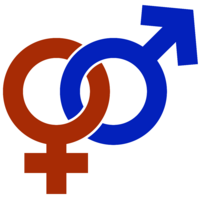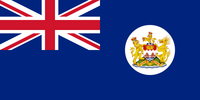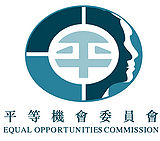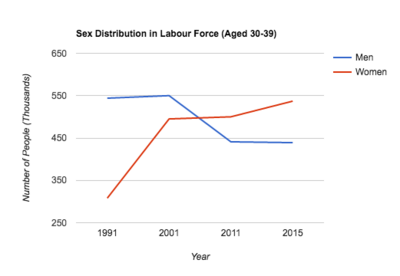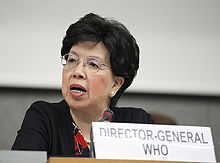Career Women in Hong Kong
Under the Chinese patriarchy structure, the Hong Kong general public have been conforming to various stereotypes regarding gender roles. For example, under the family context, while men are supposed to work outside to earn a living, women should stay home to take care of the family and deal with the chores. Therefore, the sudden emergence of career women since the mid-1990s is commonly believed to have overthrown the stereotypical view of women in Hong Kong.
While this term is used to call women who are smart, independent, and outstanding, it also gives the implicit denotation that these women are considered to be "lack of femininity" under the traditional Chinese social perception of women. According to the traditional Chinese patriarchy culture, women are assumed to be submissive to men and to perform feminine roles. Therefore, the term, career woman, has an implicative meaning of gender discrimination against women.
Definition
Career Woman is a term that refers to a woman who prioritises her career and success in her job over other aspects of her life[1]. In general, these women normally excel in their careers and have a high tendency to overlook their marriage, family, or even children.
Local Term in Hong Kong
Neuih keuhng yahn (Iron Lady), a local phrase which is having a similar meaning as Career Woman, is commonly in use after the ratification of the anti-discrimination ordinances in 1995 and the establishment of Equal Opportunities Commission in 1996[2] .
This affirmative term is usually adopted to call and describe those successful and tough women who excel in their career[3].
Status of Women and Origins of Career Women
Owing to various reasons, such as those listed below, the status of women is found gradually rising and the problem of gender inequality is progressively improving in Hong Kong, which eventually led to the abrupt rise of career women.
Prevalence of Patriarchy Society
Hong Kong had long been immensely influenced by Confucianism[4]. Before the mid-20th century, Hong Kong was still a society formulated predominantly under the Chinese patriarchy structure, i.e. boys were highly valued whereas girls were disadvantaged. For instance, during the early 20th century, local families were leaning to send boys than girls to school when they were financially unable to support the education of both children[5].
Therefore, most women in Hong Kong were having lower status when compared to men during the early 20th century.
Influence of British Colonisation
Since the British colonial period, Hong Kong has been exhibiting her uniqueness as the intersection of the Eastern and Western cultures owing to the inflow of numerous western ideas and values. The fusion of traditional Chinese patriarchy system and some modern Western ideas, namely gender equality and feminism, has given rise to the mounting social status of women in Hong Kong[6].
Introduction of Free and Compulsory Education
Along with the universalisation of education[7][8], it is found that the participation of women in the labour force has been progressively increasing [3][9], not only to do an elementary job but also to work as a professional leader for international corporations.
With statistics provided by the Hong Kong Census and Statistics Department, it is shown that the female employment rate in Hong Kong has risen by approximately 80% between 1991 (13 years since the first introduction of 9-year Free Education) and 2015[9].
In regard to the data of male, the increase in employment rate between the same period is found to be 12% only[9], which is far lower than that of women.
Nonetheless, these increments still signify the effectiveness of the 9-year compulsory education established in 1978.
Ordinances and Governmental Institutions
During the 1990s, the issue of discrimination, including gender inequality, was in fierce discussion among Hong Kongers[2]. Anti-discrimination Ordinances were implemented in 1995 and the Equal Opportunities Commission was set up in 1996 with the major aim to eradicate any kinds of unequal treatment in Hong Kong, such as workplace discrimination based on sex and disabilities[2][10].
Women Work-Life Preferences
Marriage and Childbirth
- Age of First Marriage
- In Hong Kong, the median age of first marriage for women was 23.9 in 1991 and 29.3 in 2015[11], which shows the prevalence of late marriage among Hong Kong women in recent years.
- Age of First Childbirth
Year Age 1981 25.1 2001 29.4 2015 31.4
As for the median age of first childbirth, data has shown that it was 25.1 in 1981, 29.4 in 2001 and 31.4 in 2015[11], which reflects a consistent and steady rise during this period.
Late marriage and late childbirth reflected the tendency that Hong Kong women are less family-centred since the 21st century[12].
Women in Labour Force
According to the statistics released by the Hong Kong Census and Statistics Department, women within the age range of 30-39 (i.e. the marriageable age range) have been much more economically active between 1991 and 2015, which could be shown by a 74% increase of female occupancy in Hong Kong labour force[9].
As for the figures regarding the number of female as house-wives, a downward trend is found among Hong Kong women aged 30-39[13].
These statistics has clearly indicated the fact that women in the 1990s were generally family-centred, but women nowadays are rather career-oriented even after their marriage[14].
With the intention to concentrate on their careers, Hong Kong women's tendency of getting married and pregnant late could provide them with more time and energy to achieve their career goals, which is evidenced by the increasing percentage of women involving in the labour market.
Outstanding Career Women in Hong Kong
| Margret Chan Fung Fu-chun | Anson Maria Elizabeth Chan Fang On-sang |
|
Chan was formerly working as the Director of Health in the Hong Kong Government (1994-2003), the representative of the WHO Director-General for Pandemic Influenza[15], and WHO Assistant Director-General for Communicable Diseases (2003-2006). According to Forbes, she was ranked as the 30th most powerful woman in the world in 2014[16]. |
Chan was the first woman and the first ethnic Chinese to hold this second-highest governmental position in Hong Kong under British rule[17]. |
See Also
References
- ↑ Career Women [Def. 1]. (n.d.). In Cambridge Dictionary Online, Retrieved August 3, 2016.
- ↑ Jump up to: 2.0 2.1 2.2 Law, K. W. K., & Chan, H. N. (2004). Gender Role Stereotyping in Hong Kong's Primary School Chinese Language Subject Textbooks. Asian Journal of Women's Studies, 10(1), p. 50.
- ↑ Jump up to: 3.0 3.1 Lee, E. W. Y.. (2004). Gender and change in Hong Kong: Globalization, Post-Colonialism, and Chinese Patriarchy. Vancouver, BC: University of British Columbia Press. p. 78
- ↑ Lam, C. K. N., & Goo, S. H. (2015). The Intrinsic Value of Confucianism and Its Relevance to the Legal System in Hong Kong and China. The Chinese Journal of Comparative Law, 3(1), p. 175-189.
- ↑ Salaff, Janet W. (1981). Working Daughters of Hong Kong: Filial Piety Or Power in the Family?. New York, NY: Columbia University Press. p. xi.
- ↑ Lee, E. W. Y.. (2004). Gender and change in Hong Kong: Globalization, Post-Colonialism, and Chinese Patriarchy. Vancouver, BC: University of British Columbia Press. p. 3
- ↑ Education Policy. Retrieved from https://www.youth.gov.hk/en/info-centre/education/education-policy.htm
- ↑ Hong Kong: The Facts (Education). Retrieved from http://www.gov.hk/en/about/abouthk/factsheets/docs/education.pdf.
- ↑ Jump up to: 9.0 9.1 9.2 9.3 Hong Kong Census and Statistics Department. (2016). Women and Men in Hong Kong - Key Statistics, p. 94. Retrieved from http://www.statistics.gov.hk/pub/B11303032016AN16B0100.pdf.
- ↑ Equal Opportunities Commission - Our Works. Retrieved from http://www.eoc.org.hk/eoc/graphicsfolder/showcontent.aspx?content=our%20work-eo%20works.
- ↑ Jump up to: 11.0 11.1 Hong Kong Census and Statistics Department. (2016). Women and Men in Hong Kong - Key Statistics, p. 31. Retrieved from http://www.statistics.gov.hk/pub/B11303032016AN16B0100.pdf.
- ↑ Wong, O. M. H.. (2003). Postponement or Abandonment of Marriage? Evidence from Hong Kong. Journal of Comparative Family Studies, 34(4), p. 531.
- ↑ Hong Kong Census and Statistics Department. (2016). Women and Men in Hong Kong - Key Statistics, p. 96. Retrieved from http://www.statistics.gov.hk/pub/B11303032016AN16B0100.pdf.
- ↑ Wong, O. M. H.. (2003). Postponement or Abandonment of Marriage? Evidence from Hong Kong. Journal of Comparative Family Studies, 34(4), p. 536.
- ↑ Bird flu expert to lead WHO. (2006, November 6). BBC. Retrieved from news.bbc.co.uk.
- ↑ Forbes. (2014). The World's Most Powerful Women 2014. Retrieved from http://www.forbes.com/sites/carolinehoward/2014/05/28/the-worlds-most-powerful-women-2014/
- ↑ Gould V. (2001, January 13). The Iron Lady with a soft centre. The Standard. Retrieved from http://www.thestandard.com.hk/
